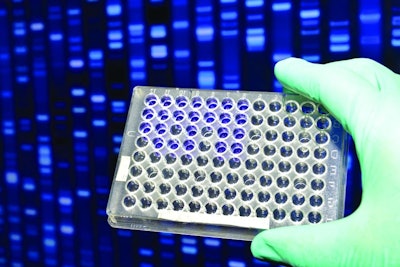
New diagnostics will offer enormous advances for broiler producers and could become the key to how birds are more successfully managed.
In the early 2000s, most Tuesday afternoons, I could be found in my office on a broiler breeder farm, preparing tubes and swabs for Wednesday's sample collection. Back then, most of our analyses centered around things like microbiological counts and antibody titers in blood.
Without doubt, having a proactive, systematic approach to diagnostics was useful. It allowed us to detect problems and take corrective action within the limits of those methods. However, I also remember the pain we endured from losses caused by undiagnosed issues, often viral, or undetermined “nutritional” problems.
The story was even blurrier for broiler production. Here, the scale of operations, their speed and the emphasis put on cost made implementation of comprehensive diagnostic programs more difficult and often unwelcome. This led to a minimalistic approach with attention focused on performance.
Still today, feed conversion rate and mortality are the main gauges for measuring broiler production. Necropsies are practiced regularly by some companies, but it is accepted that many sub-clinical and some clinical issues go undiagnosed.
In the past few years, however, there has been a boom in research groups and companies looking at diagnostic services from new angles.
Before and after sequencing
The development of genome sequencing technologies has been the engine driving that boom. Microbiological analyses, for instance, have evolved from relying solely on culture-based techniques to high-resolution pathogen detection and characterization using molecular biology.
The “chicken versus pathogens” paradigm is being replaced by viewing “the chicken as a system” and “the microbiota as a friend.” With the removal of antibiotic growth promoters, understanding and modulating the chicken’s system has become more appealing.
High-resolution tools to understand the system exist but are still confined to research. Today it is possible to measure virtually every component of the chicken: every metabolite, virus, phage or bacteria, gene, protein or transcript.
The challenge lies in developing robust and practical methods for field use, but there are groups around the world trying to find better ways of producing quality insights for producers.
An ecosystem of diagnostics
Most recent activity has gone into gut health assessment with significant investment in understanding gut microbiota changes.
Taking a different approach, some research groups have been on the hunt for the perfect gut biomarker, with developments in areas such as quantification of biomarkers in feces.
This is only the beginning. The chicken genome is already characterized, and the chicken microbiome, although a few years behind, is on its way to be. As more in-depth chicken data are produced and correlated with farm data, better diagnostic methods will emerge.
A big gap at this point is understanding the bird’s physiologic responses beyond the pathogens, the gut microbiota or the gut itself. Understanding how the birds’ genes, metabolites and proteins respond to diet, disease or the environment has massive potential to raise commercial production’s profitability.
What if, rather than focusing only on disease detection and protection, we could quantify every possible factor affecting performance by looking at a set of samples? From nutritional limitations, to toxins, stress or gut development, we could bridge the gap between genetic potential and commercial performance.
An ecosystem of complementary diagnostic services is on the horizon, and future poultry managers, veterinarians and nutritionists will have a more robust diagnostics toolbox. For them, those undiagnosed “nutritional” problems will be a thing of the past.

















